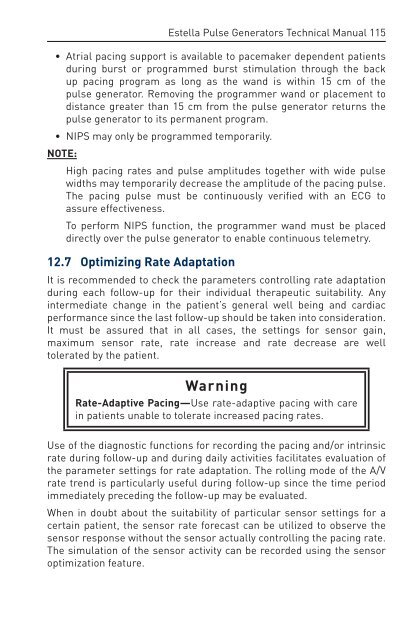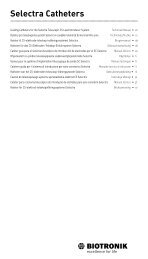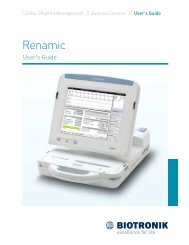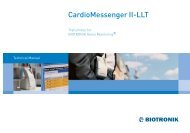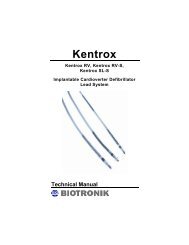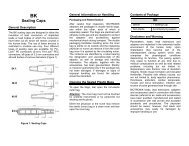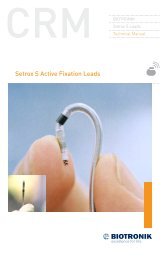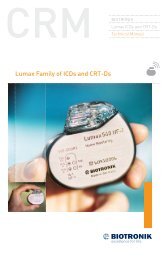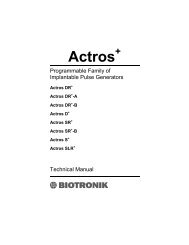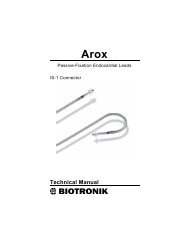Estella Pulse Generators - BIOTRONIK USA - News
Estella Pulse Generators - BIOTRONIK USA - News
Estella Pulse Generators - BIOTRONIK USA - News
Create successful ePaper yourself
Turn your PDF publications into a flip-book with our unique Google optimized e-Paper software.
<strong>Estella</strong> <strong>Pulse</strong> <strong>Generators</strong> Technical Manual 115• Atrial pacing support is available to pacemaker dependent patientsduring burst or programmed burst stimulation through the backup pacing program as long as the wand is within 15 cm of thepulse generator. Removing the programmer wand or placement todistance greater than 15 cm from the pulse generator returns thepulse generator to its permanent program.• NIPS may only be programmed temporarily.NOTE:High pacing rates and pulse amplitudes together with wide pulsewidths may temporarily decrease the amplitude of the pacing pulse.The pacing pulse must be continuously verified with an ECG toassure effectiveness.To perform NIPS function, the programmer wand must be placeddirectly over the pulse generator to enable continuous telemetry.12.7 Optimizing Rate AdaptationIt is recommended to check the parameters controlling rate adaptationduring each follow-up for their individual therapeutic suitability. Anyintermediate change in the patient’s general well being and cardiacperformance since the last follow-up should be taken into consideration.It must be assured that in all cases, the settings for sensor gain,maximum sensor rate, rate increase and rate decrease are welltolerated by the patient.WarningRate-Adaptive Pacing—Use rate-adaptive pacing with carein patients unable to tolerate increased pacing rates.Use of the diagnostic functions for recording the pacing and/or intrinsicrate during follow-up and during daily activities facilitates evaluation ofthe parameter settings for rate adaptation. The rolling mode of the A/Vrate trend is particularly useful during follow-up since the time periodimmediately preceding the follow‐up may be evaluated.When in doubt about the suitability of particular sensor settings for acertain patient, the sensor rate forecast can be utilized to observe thesensor response without the sensor actually controlling the pacing rate.The simulation of the sensor activity can be recorded using the sensoroptimization feature.


